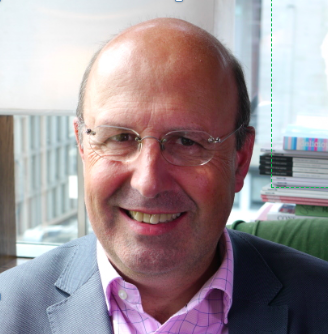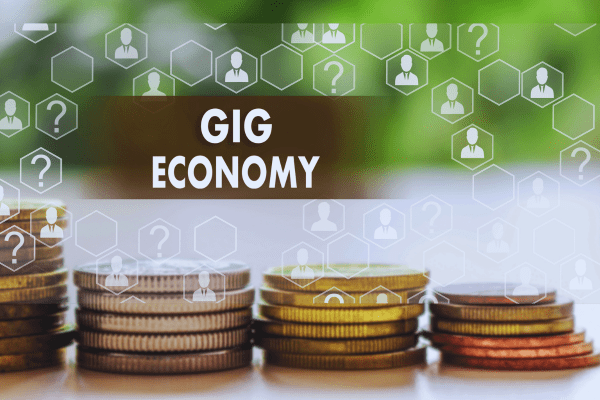You can sign up to our LinkedIn newsletter here.
Over the last 10 to 15 years, discussions about the gig economy have become more prevalent. The concept of individuals working on zero-hour contracts, where a platform dictates their schedule, has gained prominence. More people are using platforms to seek employment, whether in food delivery or low-value knowledge tasks like website design and transcription.
Are you Becoming ‘Uberised’?
The most recognised and perhaps the most infamous of these platforms is Uber, the ride-hailing app. Through this service, Uber has provided an opportunity for car owners to earn extra income and effectively become taxi drivers without navigating the complexities of a traditional taxi service.
So, does this mean that as a Portfolio Executive, you’re also joining the gig economy? Are you transitioning from full-time, permanent salaried work to the risks and opportunities of freelancing? Should you consider entering a platform to find your job?
Gigs and Freelance
Firstly, I’d like to discuss the notion that, as a Portfolio Executive, you are stepping into the gig economy. In certain respects, you are: it is true. You are positioning yourself as a hireable individual; you are becoming someone who works as a freelancer who collaborates with clients instead of being tied to a salary. This shift brings with it the obligation for your own sick pay, retirement plans, and healthcare, in addition to covering all the expenses associated with operating your business.
However, there are several ways in which being a Portfolio Executive significantly differs from the roles in the gig economy that many people undertake.
Job Size v. Long Term Service
One key difference is that in a typical gig economy role, you will have several short, bite-sized tasks to complete. For instance, if you’re an Uber driver, the bite-sized task is driving someone from point A to point B. If you’re on Fiverr, a well-known site for offering lower-value knowledge resources, your work might involve designing a graphic or reformatting a PowerPoint presentation. However, the work is often fragmented into small, discrete tasks.
In contrast, as a Portfolio Executive, you aim to develop long-term, trusted relationships with a small number of clients. While an Uber driver may receive repeat business, the continuity of work primarily comes from the platform, not from the driver’s direct relationship with clients. Typically, the Portfolio Executives I work with form connections with smaller organisations, often acting as trusted advisors to the CEO. These relationships tend to endure for four to six years, sometimes even longer. Instead of handling numerous small tasks, you generally manage a smaller portfolio of clients, potentially supplemented by one or two non-executive directorships or board advisory roles. This represents a very different style of work compared to the gig economy.
Payment Model
Another key distinction is the payment model. In the gig economy, you tend to get paid per job. For example, on Fiverr, you earn a set amount for each small task you complete. In contrast, Portfolio Executives generally charge for their services by the day. I strongly recommend transitioning from billing clients by the day to charging a fixed monthly amount that reflects your ongoing service. For instance, a fractional finance director would take responsibility for the finance function of a smaller organisation and provide the same level of insight and oversight as a full-time finance director to the CEO and the rest of the executive team. A fixed monthly fee presents a better way to convey value than a daily rate. You offer an ongoing service rather than completing individual units of work that traditional gig workers are measured by.
Pros and Cons of a Platform
Now, let’s tackle the question: should you use a platform to find work? This is a challenging question. There are certain individuals who prefer not to seek work directly. If you fear the process of winning work or lack experience in developing clients, you might turn to platforms or third-party brokers to find clients. However, there are several drawbacks to this approach.
The first problem is the significant margin that platform providers often take, sometimes as high as 40%. The second issue is that these platforms prioritise volume over value. They focus less on obtaining the highest possible value for your time and more on deploying as many people as possible. The third problem is that you shift your dependency from a single employer to one on your platform. Some of these platforms even require exclusive engagement.
For these reasons, I am very cautious about suggesting Portfolio Executives work through a platform. However, there is an alternative that I think can be interesting. Some emerging platforms allow you to continue contracting in your own right while providing an umbrella brand with resources through which you can promote and deliver your services.
For example, even though I’m not currently acting as a broker, we have the Portfolio Executive community https://portfolioexecutive.biz/community/ whose members are actively promoted on our website. The members also help each other find work. This represents a kind of “platform-lite” where the platform offers minimal services, primarily recognition and community, without any fees involved.
Conclusions
Are you entering the gig economy as a Portfolio Executive, are you joining the gig economy? The answer is ‘no’. You’re not taking on multiple short-term tasks for different clients, nor are you using platforms like Uber or Fiverr to find work. However, you do enjoy several advantages sought after by gig workers: independence, the choice of the work you want to undertake, and the opportunity to break free from the limitations imposed by conventional careers lock you into.

Charles McLachlan is the founder of FuturePerfect and on a mission to transform the future of work and business. The Portfolio Executive programme is a new initiative to help executives build a sustainable and impactful second-half-career. Creating an alternative future takes imagination, design, organisation and many other thinking skills. Charles is happy to lend them to you.
